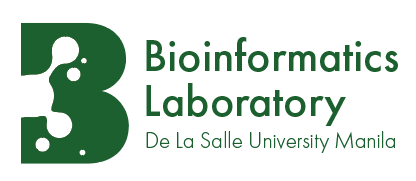Introduction to hidden Markov model#
A hidden Markov model (HMM) is used to model sequential data. Sequential data are everywhere: weather, stock market, speech signals, natural languages, and importantly for us, biological sequences like DNA and protein sequences.
Toy example for motivation#
Let’s get acquainted to the idea of HMMs through a toy example. HMM folks seem to like examples concering weather, and here is a nice one for estimating weather from ice cream consumption.
A more relatable toy example#
[Eddy, 2004] shows a more relatable example of using an HMM for splice site estimation.
Super concise mathematical description#
To summarize, an HMM is used to model a sequence of symbols or observations \(O = o_1, o_2, \ldots, o_T\).
The model assumes that there is a corresponding unobserved sequence \(Q = q_1, q_2, \ldots, q_T\) of hidden states that generated the observation sequence.
The model assumes Markovian property on the states, which is that the probability of being on a particular state only depends on the previous state:
\(p (q_t \mid q_1, q_2, \ldots q_{t-1}) = p (q_t \mid q_{t-1})\).
It further assumes output independence, meaning that the probability of producing an output symbol depends only on the state that produced it and not on any other states or observations, i.e. \(p (o_t \mid q_1, \ldots q_T, o_1, \ldots o_T ) = p (o_t \mid q_{t})\).
Model specification#
a set \(\{S_1,S_2, \ldots, S_N\}\) of hidden states
an alphabet of symbols
transition probabilities
emission probabilities
an initial probablity distribution over the states \(\pi_{S_1},\pi_{S_2}, \ldots, \pi_{S_N}\).
Probabilities on HMM#
Given a fully specified HMM, we can compute various probabilities.
:::{dropdown} Joint probability
Given an observation sequence \(O = o_1, o_2, \ldots, o_T\) and a state sequence \(Q = q_1, q_2,\ldots, q_T\), the joint probability of the sequence-state pair is:
Since \(Q\) is hidden, this probably is usually not computed and is only conceptual. ::: :::{dropdown} Forward probability
Given an observation sequence \(O = o_1, o_2, \ldots, o_T\), the forward probability \({\alpha}_t(i)\) is the probability of observing the first \(t\) symbols in \(O\) and \(o_t\) being emitted from state \(S_i\), i.e.:
It can be computed by the forward algorithm. :::
:::{dropdown} Backward probability
Given an observation sequence \(O = o_1, o_2, \ldots, o_T\), the backward variable \({\beta}_t(i)\) is the probability that given \(q_t = S_i\), we observe the remaining partial sequence \(o_{t+1}\) to \(o_T\):
It can be computed by the backward algorithm. :::
:::{dropdown} Posterior state probability
The posterior probability is the probability that \(o_t\) was emitted from state \(S_i\) given the entire observation sequence:
It is related to the forward and backward probabilities as:
:::
Problems on HMM#
There are three fundamental problems to solved with an HMM.
:::{dropdown} Evaluation
Given an HMM model, and an observation sequence \(O\), the evaluation problem is to compute the probability \(p(O)\), marginalizing out the state sequences, i.e.:
It can be computed using the forward algorithm since:
It lets us define a probability distribution on the observation space.
It can be used when the HMM is a classifier. :::
:::{dropdown} Decoding (Viterbi)
The problem of finding a path (state sequence) that “best” describes the observations is called decoding.
One definition of best is a path \(Q^*\) that maximizes the joint probability \(p(O,Q)\), i.e.:
It can be computed by the Viterbi algorithm, and is therefore called a Viterbi path.
A problem with this decoding is that there might be many paths with similarly high joint probability. :::
:::{dropdown} Decoding (posterior)
Another way to define decoding is to find a path \(\hat{Q} = \hat{q_1}, \hat{q_2}, \ldots \hat{q_T}\) such that \(\hat{q}_t\) is the state with the highest posterior probability at time \(t\), i.e.:
A problem with this decoding is that \(Q*\) might not be a valid state sequence if there are transitions that have zero probability. :::
:::{dropdown} Model Training
If state sequences are provided along with observation sequences, then the transition and emission probabilities are easily estimated just based on counts.
If state sequences are not provided, then using Baum-Welch algorithm. :::
Bioinformatics application examples#
Bioinformatics is full of examples of application of HMMs.
They have been used for gene finding in prokaryotes and eukaryotes, for predicting chromatin states, etc.
A special kind of HMM called profile HMMs are used to model protein families or RNA families or transposon families PFAM, DFAM, RFAM. More on profile HMMs later in the course.
Another special kind of HMM called pair HMMs provide a probability distribution over the sequence alignment space allowing probabilistic interpretation of sequence alignment. More on this later when we deal with sequence alignments.
Further reading#
This was a whirlwind tour of HMM. We skipped past most of the technical details of the algorithms. For more detailed treatment, refer to one or more of the following. [Rabiner, 1989] provides a tutorial on HMM. [Yoon, 2009] provides a summary of HMMs and examples of application to bioinformatics. Here is an online book discussing HMMs along with bioinformatics applications. Chapter 3 of Durbin et al. Biological sequence analysis is another good option.
References#
Sean R Eddy. What is a hidden markov model? Nat. Biotechnol., 22(10):1315–1316, October 2004.
L R Rabiner. A tutorial on hidden markov models and selected applications in speech recognition. Proc. IEEE Inst. Electr. Electron. Eng., 77(2):257–286, 1989.
Byung-Jun Yoon. Hidden markov models and their applications in biological sequence analysis. Curr. Genomics, 10(6):402–415, September 2009.
